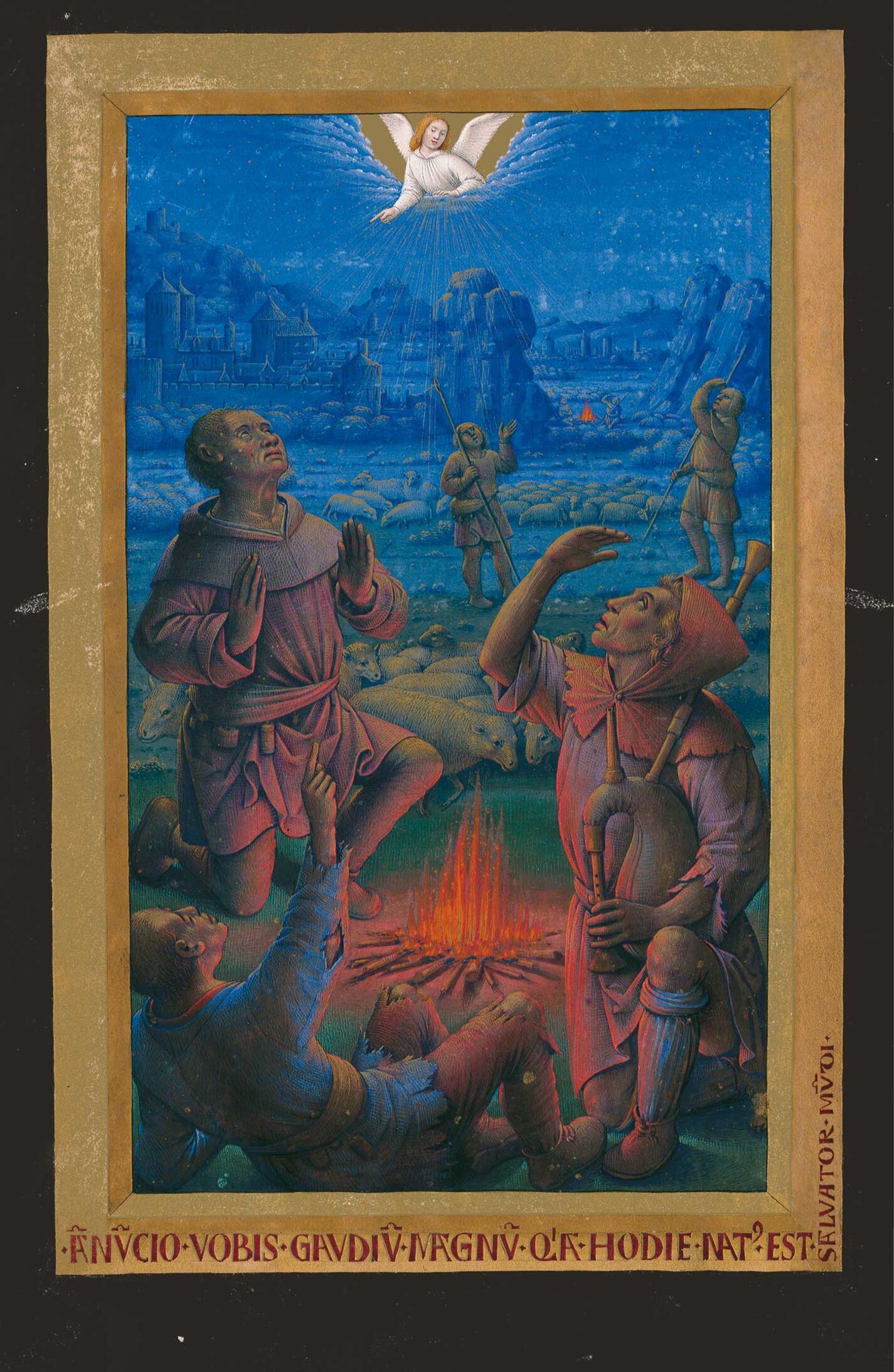The painting is surrounded by a plain, gold frame with the following words in its bottom and right sides “
anv[n]cio · vobis · gavdiv[m] · magnv[m] · q[ui]a · hodie · nat[us] · est · /salvator · mv[n]di” and shows three shepherds in the foreground around a fire. The painter, Jean Bourdichon, conveys the different temporal and psychological states of each. One of the shepherds points out the apparition in the sky above them. The one on the right stops playing his bagpipe to look at the apparition, shading his eyes from its blinding light with his right hand. The third shepherd kneels down and opens his hands in surprise. Apart from the gestures of the hands and arms, the rest of the body is in chiastic symmetry. In the background is a flock of sheep. Then come two shepherds who look up and react to the vision in different ways. The one on the left stretches out one of his hands whilst the one on the right shields his face with his arm. Bethlehem appears in the background like a great, fortified city and, on the right, another two shepherds beside a fire looking after the animals start to become aware of the apparition of the angel, as shown by their uplifted heads and the arm one of them holds aloft to shield his face. The landscape ends with rocky masses, mountains and cities in the background. At the top in the middle against a golden ground, an angel dressed in white draws back the sky creating cloudy folds. He turns to the shepherds and points towards Bethlehem. Mention must be made of Jean Bourdichon’s meticulous portrayal of the shepherds’ traits – coarse but noble, never caricatures. Likewise, his treatment of light, creating two sources: the lower light cast by the fire whose glow is gradually reflected on the bodies of the three shepherds, and the upper source the angel casts upon the faces of the shepherds in the foreground and the bodies of those in the background. Another noteworthy aspect is the portrayal of different textures: the fleece of the sheepskin, the different types of cloth and the tanned hides of the shepherds, which contrast with the angel’s soft complexion. His study of space is also utterly convincing. By adopting a viewpoint slightly higher than that of the man in the foreground pointing at the sky, the artist gives viewers the impression that they are part of the scene, and their eyes are slowly directed to the shepherds standing in the background who then lead directly to the vision of the angel. In doing so, Jean Bourdichon manipulates the viewers’ visual psychology, gradually leading them towards the surprise of the heavenly apparition.
The annunciation to the shepherds is the first epiphany. They represent the Jewish people who received the news of the birth of Christ first. They must also be interpreted, according to the Fathers of the Church, as the model for future priests safeguarding the faithful against the dangers of the world. Hence, the brightness seen by the shepherds is the grace given to the priests who fulfil their mission well.
